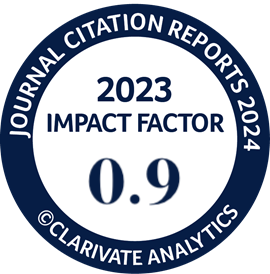Reanalysis of Vertical Land Motion at Tide Gauge Stations in Thailand Utilizing GNSS Continuous Operating Reference Stations
DOI:
https://doi.org/10.4186/ej.2025.29.3.1Keywords:
sea level monitoring, tide gauges, vertical land motion, GNSS, continuous operating reference stationsAbstract
Sea level monitoring is critical for coastal management, water resource planning, and climate change studies, particularly in Thailand, where agriculture forms the backbone of the economy. In Thailand, sea level observations primarily rely on tide gauge stations. However, tide gauge measurements are often influenced by vertical land motion (VLM), including land subsidence or uplift. To address this, the Global Navigation Satellite System (GNSS) offers a reliable solution for determining VLM. This study leverages the established network of Continuous Operating Reference Stations (CORS) in Thailand, utilizing co-located GNSS CORS with tide gauge stations in the Gulf of Thailand to quantify VLM at tide gauge stations. The VLM corrections were applied to tide gauge data to refine sea level estimates and provide insights into long-term sea level changes. The findings reveal that sea level changes corrected for VLM demonstrate discrepancies of approximately 4–5 millimeters when compared to sea level changes derived from satellite altimetry. This indicates that GNSS-derived VLM from the CORS network in Thailand is influenced by additional factors that may introduce biases in corrected sea level measurements. These results highlight the importance of addressing these influences to improve the accuracy of sea level monitoring and contribute to more reliable climate and coastal management strategies.
Downloads
Downloads

Authors who publish with Engineering Journal agree to transfer all copyright rights in and to the above work to the Engineering Journal (EJ)'s Editorial Board so that EJ's Editorial Board shall have the right to publish the work for nonprofit use in any media or form. In return, authors retain: (1) all proprietary rights other than copyright; (2) re-use of all or part of the above paper in their other work; (3) right to reproduce or authorize others to reproduce the above paper for authors' personal use or for company use if the source and EJ's copyright notice is indicated, and if the reproduction is not made for the purpose of sale.








